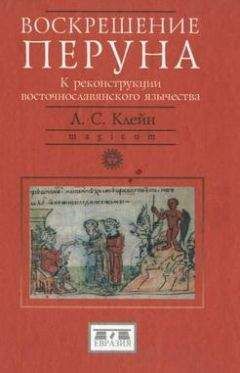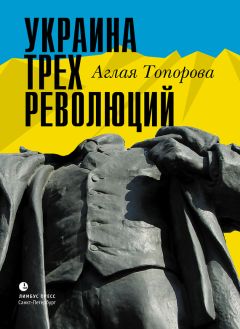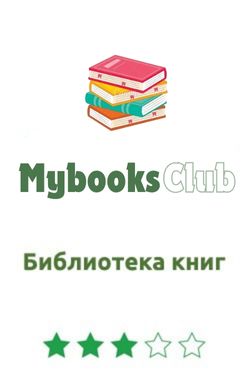Провожали и некоторых других персонажей — на Масленицу (ранней весной) провожали Масленицу, на Ивана Крестителя (летнее солнцестояние) бросали в реку Купалу, у южных славян Мару, Марену, и т. д. Подмеченная Проппом общность ряда компонентов обрядности этих праздников очень важна, но вряд ли она объяснима общностью крестьянских работ: сезоны-то разные. Скорее общность нужно объяснять ответвлением одних праздников от других (или другого). Масленичный ритуал с подъемом и скатыванием огненного колеса, увязываемый с магическим обеспечением схождения солнца от верхней точки на эклиптике, соответствует летнему солнцевороту, а не весеннему подъему солнца к этой точке. Но празднование Ивана Купалы, сохранившееся на Украине и в Белоруссии, вытеснено в русских землях христианским постом. Перед постом оно и образовало Масленицу, которой нет на Украине и в Белоруссии.
Кроме этого ритуала Купальские торжества характеризуются интенсивной сексуальностью (Купало — не от слова «купать», а от совокупления) и элементами культа Перуна. Купало — не имя, а кличка, эпиклеза Перуна. Еще более эротичность проявляется в Ярилках, «проводах Ярилы», которые также оказываются вытесненными со своего календарного места обрядами того же комплекса, а итифаллический Ярило — другая эпиклеза Перуна (связанная с его сексуальными, брачующими функциями).
Таким образом, под этими языческими по составу, но поздними новообразованиями выявляется исконный регулярный языческий праздник «Проводы Перуна», отмечавший его погубление, смерть и совпадавший по календарному месту с летним солнцеворотом. По- видимому, описанное в летописи низвержение идола Перуна (избиение идола «двенадцатью мужами», оплакивание другими, сплав по воде) являлось на деле непонятым авторами летописи описанием регулярных проводов Перуна в день летнего солнцеворота.
Напрашивается предположение, что если были проводы, то должна быть и встреча — ежегодное появление Перуна, его рождение. Действительно, в противоположной точке календарной шкалы, на месте зимнего солнцеворота, в народном календаре есть целая декада вполне языческих торжеств — Святки. У южных славян этот праздник отмечается почитанием дубовой колоды, называемой Бадняк, которой приписываются атрибуты антропоморфного божества, причем старика, а одновременно появляется молодой Божич (сын бога). У русских в это время проводились игры ряженых, среди которых примечательны «игры с умруном». Покойника, которого изображал ряженый, якобы оживляли сугубо сексуальными действиями. В число этих действий входили мастурбация и фелляция, к которым вынуждали «девок» деревни. Этот способ оживления и омоложения связан с верой в благотворные свойства мужского семени. Сама же идея оживления родственна древней индоевропейской идее сансары (второй жизни на земле, переселения душ).
Итак, Перун оказывается божеством из ряда умирающих и воскресающих богов. В соответствии с циклом его празднеств год у восточных славян делился на две половины, подобно тому, как делился у греков на эпидемию и аподемию по праздникам встречи и проводов Аполлона. Только в соответствии с другим климатом точки деления падали у восточных славян на другие сроки. Культ же Перуна, как и Аполлона, отправляли именно женщины и девушки.
Вероятно, наличие в славянском языческом пантеоне умирающего и воскресающего божества и его главенство повлияли на выбор вер — обеспечили преимущество христианству, с его воскресением Иисуса Христа, и облегчили славянам сравнительно быстрое восприятие христианства. Главная мистерия христианства была им близка и понятна по сути.
An approach to reconstruction of East-Slavic pagan religion by L. S. Klejn
Summary
Leaving aside conjectures, inferences by analogy, indirect considerations, and guess-work while addressing the original material, the sources, it appears that time and victorious Christianity have worked well at destroying the Slavic pagan religion: the information we obtained on Perun was very scarce and fragmented. The memory on Perun seems to remain only in some swearwords, in a couple of stories mentioned in the chronicles (on erecting and overthrowing of Perun's and other gods' idols in Kiev and Novgorod), as well as in oaths using the names of these gods in treaties with the Byzantines. The accusations levelled at the «apostates» in sermons by early Christian preachers contained little specific information. Similar names of pagan gods are known in some related Slavic languages. There is also some evidence on functions of these characters among several related peoples. This evidence concerns not so much their mythology, as the rituals associated with it. Myths of Perun have not been recorded.
Only from the time of the Renaissance and consequent study of classical mythology in Europe did the interest in domestic pre-Christian phenomena begin, particularly in the material that could be directly compared to similar classical examples. Addressing the mythology of some linguistically and culturally related peoples, two Polish authors of the 15th—16th centuries, A. D., J. Dlugosch and M. Srtryjkowski, retold (in a somewhat confused and tangled way) some data from the Russian chronicles, as well as cited what they themselves heard in the East. In the 17th century, further evidence on pagan beliefs was collected by the German, English and other European travelers to Russia.
In Russia itself, the studies of domestic paganism began only since the era of Peter the Great, i.e. the 18th century. Initially, the confused notions of Western scholarship of the time were borrowed wholesale. In the early 19th century, Russian scholars still based their approach on purely speculative considerations. They produced long lists of gods culled from enigmatic words in proverbs and songs (cf. A. S. Kaisarov, G. Glinka, a.o.). They strived to present the religion of their ancestors in a positive and idealized manner, not only as pre-eminent among the other pagan religions, but also as near to Christianity (cf. P. Stroev, M. Kastorsky, N. Kostomarov, S. M. Solovyev). The Slavophiles, however, did not support fully this approach; they advanced the idea of the original closeness of Slavic customs to orthodox monogamy and denied the existence of any developed pagan polytheism at any time. In their opinion, the pagan gods of the Chronicles were brought to Russia by the Varangians.
Since the middle of the 19th century when the research of the comparative school began, it had established the close connections between the mythologies of various Indo-European peoples. The Slavic system appeared to be kindred to the Greek, Roman and Indian systems. The entire pantheon began to be thought of as derived from the common matrix of the original Indo- European ethnos (Ur-Volk). In the spirit of the solar-mythological school, the anthropomorphic deities were thought of as derived from the worship of nature, and through poetic allegories (see D. O. Shepping, A. N. Afanasyev). In the spirit of diffusionism, A. S. Famintsyn continued the Slavophile traditon, while N. I. Kareev defended the secondary emergence of monotheism. The adherents of evolutionism, developed in the 70s and 80s of the 19th century, derived the images of gods from the lower demonology — from the belief in spirits (in Russia demonology was studied by N. F. Sumtsov).
The evolutionist and diffusionist approaches were combined in the works of Lubor Niederle and A. N. Veselovsky. Both of them thought that the Slavs did not succeed in developing a higher mythology and had remained on the level of demonology. Other scholars rejected the conclusions of the mythological school for a different reason. They stressed the shortage of available facts and did not believe in the reliability of any of the offered hypotheses (W. Jagič, H. Máchal, L. Leger, A. Kirpichnikov).
In the works by scholars of the 20th century (E. V. Anichkov, N. M. Galkovsky, V. J. Mansikka), this scepticism was overcome, and the analysis of sermons by orthodox preachers against survivals of paganism came to the fore. But following the preachers' vilification of the pagan practices, the scholars involuntarily inherited their bias as well. They still viewed paganism as a rough and primitive belief system. Anichkov, for instance, held that Rus abounded in minor gods (or rather demons) while the powerful major gods were borrowed from the Varangians. In this he followed S. Ruzhnetsky's work on Perun as an imitation of Thor.
In the 20th century, the Polish scholars (H. Lowmianski, W. Szafraňski, L. Moszyňski) picked up the trend emphasizing the primacy of attributes of monotheism in Slavic paganism. One may detect in this the influence of Catholicism. For these scholars, Perun was not simply the main god, but the only god, all others being only his incarnations.
Among Soviet scholars, the official militant atheism had prevented the study of Slavic paganism for a long time. Besides, their obligatory Marxist vitriol was reserved mainly for the major ideological enemies — Christianity and Islam. However not long before the Great Patriotic War (World War II), the interest in Slavic paganism was revived due to the regime's encouragement of patriotism in the country. Four new concepts of Slavic paganism were introduced. In all of them the focus had shifted from using historical records to those provided by ethnography and archaeology.
The first concept was worked out by the official leaders of Soviet science, such as B. D. Grekov and B. A. Rybakov, Members of the Academy of Sciences. According to their concept, the Eastern Slavs (living from the time immemorial on the same territories as at the present) had discovered — some thousands years В. C. — the plough agriculture, created the state, and developed a pagan religion that came very close to Christianity.
The second concept was presented by the officially disgraced scholar, Professor Vladimir Propp, one of the founders of Soviet semiotics (he was one of the leaders of world structuralism as well). Propp has observed that Russian agricultural festivals, which are highly seasonal, demonstrate a stable set of common features (due, he said, mainly to the similarity of peasant working conditions). Since these festivals totally lack any developed gods, the inference was that the underlying Russian paganism was totally devoid of them, being of an especially archaic nature (like in the views of Anichkov, Niederle and Veselovsky). Such figures as Kupalo, Yarilo and the like, were «underdeveloped deities».
V. Propp's opinions added an additional impulse to the legacy of the work done by the Russian ethnographer of the older generation, Dmitriy Zelenin, who had studied Slavic demonology with the retrospective method. His follower was Nikita I. Tolstoy, the grand-grandson of Leo Tolstoy. Member of the Academy of Sciences, he had built an influential school of ethnographers and ethnolinguists. So, the third major concept of Slavic Paganism emerged, aimed at reconstructing the old pagan religion using the exclusively ethnographic material. Naturally it could throw to the past only what remained kept in the living culture, i. e. no major gods. Thus the most prominent professional ethnographers, ethnolinguists, and folklorists have accepted the idea of the ancient Slavs having only lower mythology (demonology).
The fourth concept was offered by Vyacheslav Ivanov and Valdimir Toporov, also structuralists and (if for no other reason than this) considered by the regime as frondeurs. They used the names of Slavic gods as their main source and compared them with other Indo-European names, social terms, and myths. On this basis they began reconstructing a developed mythology derived from the common Indo-European substrate (the «Basic Myth», the initial struggle of Perun against Volos -Veles, etc.). Their methodology was to a great extent borrowed from Levy-Strauss. It allowed them to reach such freedom of making connections that the results of their reconstructions became very rich, but, alas, lost the reliability. There is no direct proof of the struggle of Perun against Volos (and Volos, as distinct from Veles, probably is at all a new god, most likely having emerged as a transformation of the Christian Saint Vlasius/ Blasius, Bulgarian Vlas).
As far as Boris Rybakov's theory is concerned, it is analysed and criticized at great length in this work since it turned out to be the most influential, and until now remains such, particularly outside the confines of the scholarly world. Rybakov's use of material (the entire categories of which he simply lacked the professional qualifications to process) was already outdated at his time and often embarrassingly crude. The conclusions at which he arrived were not just unsound but often simply comical. In spite of all this, however, one must give him his due for his his considerable imagination and enthusiasm for his subject matter.





